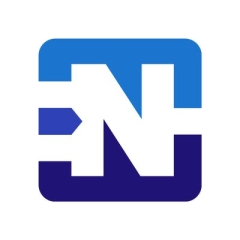At a custom company with several locations.

At a custom company with several locations.
It has improve my organization through the services that can be added, which makes it highly scalable, from graphic monitoring services to load balancing or captive portal.
It is very difficult to decide one, as they all complement each other, from the DHCP administration to the captive portal. in my case, I would say OpenVPN has helped me to interconnect the company network in a secure and manageable way.
ClamAV AntiVirus can cause some crashes. That service should be improved.
For two years.
I consider it very stable.
It is highly scalable. All services are free.
No, there was no firewall implemented.
The initial setup was simple and fast.
It is an open source firewall.
Yes, OPNsense. It is very similar and better than PfSense.
You should try it.
pfSense allows us to spread the hours of connection and do the filtering on the pfSense site.
The most valuable feature of this solution is its simplicity.
The integration could be improved.
I have been using this solution for more than ten years.
This is a very stable solution.
This solution is scalable.
The initial setup was easy and took about 50 minutes.
This is a no-cost solution.
I would rate this solution as eight out of ten because it's a central solution.
Our primary use case for this solution is Endpoint Advanced. I have set it up for the firewall and the open VPN connections.
It would be great to add more to security.
I know that pfSense has a lot of features, but I don't know how to configure and enable them. That is why I am looking into my support options. I am looking for better security and performance.
I have been using this solution for almost two years.
pfSense is scalable. Currently, we have almost 30 people using it in our company.
I'm currently struggling with deploying pfSense more extensively. Right now, we are not getting much support on their end.
My opinion about pfSense's pricing is good. They are open source.
We use pfSense as a firewall in the healthcare sector, education sector, and banking sector.
pfSense is very easy to use.
It is a better firewall than others and it has better features.
They do not provide support in India.
The security could be improved.
I have been selling pfSense for 12 years.
pfSense is a very stable solution.
We have 50 customers who use this solution.
We provide local support to our customers.
It is very easy to install.
We only need one person to install and maintain this solution.
When compared with other firewalls, the price is reasonable.
There is an open-source community version that is available.
I would rate pfSense a nine out of ten.
While it is difficult for me to point to any one specific advantage of the solution in respect of the firewall, I do know that it has many benefits. For one, it is open source.
The stability could be improved. Whenever there is an update, in spite of developments I may have made, I am required to make certain changes to the coding.
I have been using pfSense for perhaps two or three years.
The stability could be better.
The solution seems to be scalable.
The solution is easy to set up.
I develop the solution on behalf of my company.
With my scant knowledge of networking and the firewall I would rate pfSense as an eight out of ten.
My primary use case is for controlling incoming traffic from various countries and blocking IP addresses if necessary. I'm the company director and a user of pfSense.
A key feature is being able to block IP addresses. This is a good product and I have no issues with it.
I'd like to see some instructional videos as opposed to documentation. It would be helpful for beginners and start-up companies.
I've been using this solution for a couple of months.
This solution is stable.
It's worth giving this product a shot and testing it out because it's free and community based.
I would rate the community version a 10 out of 10.
It is a stable solution. It is also easy to install and can be deployed and maintained by one team member.
pfSense has some limitations in detecting site sessions. We want to control internet usage based on sites and their content, and pfSense doesn't perform this function.
The site itself could be improved; it's not easy to find the things that you want to implement and apply.
It would be good if it had more features like Sophos does.
I've been using pfSense for two years.
It is a stable product.
The installation was easy. I was able to install it in two hours maximum. Only one person is needed for deployment and maintenance.
Currently, we don't pay for a license.
We have fifty users in our organization, and I can recommend pfSense. On a scale from one to ten, I would rate it at eight.
We use pfSense as a firewall and proxy server. We use it to apply different restrictions for different users from some data locations.
I mostly like all of it. Whatever we use is valuable.
There are some bias issues and some intrusions in our network that have to be addressed. So, we're thinking of changing this firewall to something like a professional hardware-enabled firewall.
I have been working with pfSense for many years now.
pfSense is a stable solution.
pfSense is a scalable solution. We have about 200 users in our company.
On a scale from one to ten, I would give pfSense a seven.

